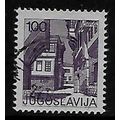Cinderford, Gloucestershire - Sutton Ponds - Plastichrome postcard c.1960s
- Condition : Used
- Dispatch : 2 Days
- Brand : None
- ID# : 207505781
- Quantity : 1 item
- Views : 140
- Location : United Kingdom

- Seller : justthebook (+1703)
- Barcode : None
- Start : Thu 31 Mar 2022 10:24:39 (BST)
- Close : Run Until Sold
- Remain : Run Until Sold
More Listings from This Seller view all
Seller's Description
- Postcard
- Picture / Image: Sutton Ponds, Cinderford [Forest of Dean, Gloucestershire]
- Publisher: Plastichrome / colour by W.R. Bawden (WHS 4321)
- Postally used: no
- Stamp: n/a
- Postmark(s): n/a
- Sent to: n/a
- Notes / condition:
Please ask if you need any other information and I will do the best I can to answer.
Image may be low res for illustrative purposes - if you need a higher definition image then please contact me and I may be able to send one. No cards have been trimmed (unless stated).
------------------------------------------------
Postage & Packing:
Postage and packing charge should be showing for your location (contact if not sure).
No additional charges for more than one postcard. You can buy as many postcards from me as you like and you will just pay the fee above once. Please wait for combined invoice. (If buying postcards with other things such as books, please contact or wait for invoice before paying).
Payment Methods:
UK and all other locations - PayPal or other methods listed above.
NOTE: All postcards are sent in brand new stiffened envelopes which I have bought for the task. These are specially made to protect postcards and you may be able to re-use them.
I will give a full refund if you are not fully satisfied with the postcard.
----------------------------------------------
Text from the free encyclopedia WIKIPEDIA may appear below to give a little background information (internal links may not work) :
*************
Cinderford is a town and civil parish on the eastern fringe of the Forest of Dean in Gloucestershire, England, which had a population of 8,494 at the 2011 census.[1]
The town came into existence in the 19th century, following the rapid expansion of Cinderford Ironworks and the Forest of Dean Coalfield. Cinderford's origins can be seen in the style and layout of the town, with long rows of identical terraced housing similar to those found in the mining villages of the South Wales Valleys. The decline of the coal industry in the 1950s and 1960s affected Cinderford as most of the male population was employed in mining.
The name Cinderford, used for a crossing-point, is recorded as early as 1258. The name reflects the site of early ironmaking which created deposits of cinders (clinker), sometimes in large mounds.[2]
Following the construction of Cinderford Ironworks in the late 1700s, and the opening of large mines nearby,[3] the town was laid out on a fairly conventional urban plan.[4] In 1841 there were two inns and at least ten beerhouses in and around Cinderford.[5] A new church was consecrated at Cinderford in 1844 and dedicated to St. John the Evangelist.[6] By 1843 Cinderford also had a Baptist church which became by far the largest Baptist meeting in the Forest of Dean.[7] Methodists and Primitive Methodists also had chapels in the area, and there was even an iron building which became known as the Ark, which was registered in 1886 by a group called the Blue Ribbon Gospel Army.[7]
A coke-fired furnace was established in around 1797. It was situated 800 metres north of Cinderford bridge and used coke brought from Broadmoor, to the north, by a short canal. The furnace struggled to compete with iron furnaces elsewhere, and fell idle ten years later.[2] It was revived in 1829 when new works on the old site were established by the Forest of Dean Iron Company, and in 1841 there were three furnaces producing 12,000 tons of iron a year and employing 100 men and boys.[2] Only one furnace at the works was in blast in 1890 and the works closed in 1894.[2]
The Bridge Inn, Cinderford, now closed and demolished.[8]
By the 1840s Cinderford had a number of foundries and small engineering firms supplying the mining industry with machine parts, and it remained a centre for metal industries in the early 20th century.[2]
For many years coal mining was the principal industry in the area. Lightmoor coal mine was being deepened in the late 1830s.[2] Trafalgar colliery which was in production in 1860, was the only large mine in the coalfield run by free miners in the later 19th century.[2] Trafalgar closed in 1925. A deep mine, called Northern United, was begun north-west of Cinderford in 1933, but Lightmoor, with a workforce of 600 in 1934, was the main colliery in the Cinderford area until it closed in 1940.[2] There were still many smaller collieries in the Forest of Dean, employing 84.5 per cent of the adult male population in the Cinderford area, until the industry declined in the 1960s.[2]
Iron ore mines were also worked near the town in the 19th century until the closure of the Cinderford ironworks led to the abandonment of Buckshaft and other ore mines near the town in 1899.[2]
Listing Information
| Listing Type | Gallery Listing |
| Listing ID# | 207505781 |
| Start Time | Thu 31 Mar 2022 10:24:39 (BST) |
| Close Time | Run Until Sold |
| Starting Bid | Fixed Price (no bidding) |
| Item Condition | Used |
| Bids | 0 |
| Views | 140 |
| Dispatch Time | 2 Days |
| Quantity | 1 |
| Location | United Kingdom |
| Auto Extend | No |



 for 1 item(s)
for 1 item(s)

















